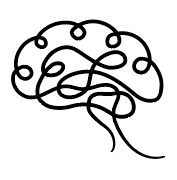The Tessmar group at the Max Perutz labs investigates the modulation of NSCs from the perspective of a specific molecular machinery that is known to encode time: the circadian clock. It is safe to say that for us, time is of the essence.
The ways that stem cells affect neural stem cells (NSCs) are likely both cell autonomous and non-autonomous. It is hypothesized that stem cell niche diversity is guaranteed through phase differences of the circadian clock. This would ensure a balance of cells that respond differentially to external cues, depending on their different internal state. This prevents the depletion of an entire population at a single time point and allows for time-dependent changes in fate commitment.
We know that NSCs are affected by mutations in core circadian clock genes, influencing various critical parameters from cell cycle entry and exit to cell fate commitment. An interesting fact about circadian clock genes is their naturally occurring genetic human variants, which exhibit timing differences, e.g. in their rise and bed-times. Extreme cases of such human timing variants often result in rhythm abnormalities and phenotype as severe neuropsychological problems. The cellular and molecular reasons for the neuropsychological problems of such extreme human timing variants are not understood.
Building on our current understanding of core circadian gene roles in stem cells, we are combining knowledge in mammalian neural stem cells from the Hippenmeyer and Urban groups, with our extensive experience in chronobiology and neurobiology to initially identify which members of the circadian clock are required for mammalian NSC heterogeneity during developmental lineage progression and adult maintenance of the population.
To deepen our understanding of how naturally occurring circadian timing variants impact mammalian NSCs affecting brain function, we will characterize two transcriptional repressors in the mouse, assessing their principal effects on adult hippocampal stem cell quiescence or activation, by using MADM technology-on stem cell lineage progression in early cortical development. In parallel, we will genetically engineer and analyze, how known naturally occurring timing mutations phenotype in the mouse.
Our findings will facilitate the generation of dominant genetic timing variants in human induced NSCs and help assess the formation of human brain organoids, carrying great potential in technological advancement.


Add Your Comment